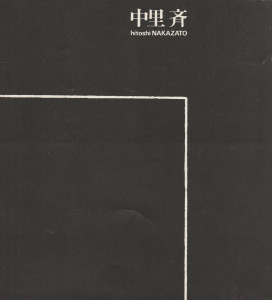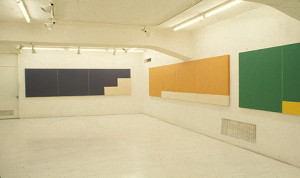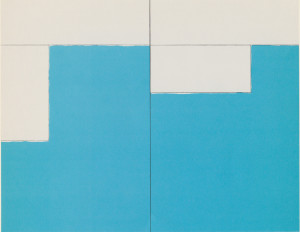Hitoshi Nakazato Exbitition
Apr. 12 – 24, 1982
“In his work the visual play is complex and rewarding, an art that renews itself even as we look. Nakazato, who these days lives and teaches in America has brought uncommon sensitivity and intelligence to bear upon the perception of artist modernism both East and West.”
Gene Baro, curator
Hitoshi Nakazato …….
What an artist leaves out of a work is often as important as what he puts into it. And the degree to which he finishes it, brings in to an explicit conclusion or leaves it allusive, is a third element in establishing its intelligent and visual resilience, its power to interest us anew.
In the paintings of Hitoshi Nakazato the tensions between what is literal and what is illusion are subtly controlled. No work of his can be seen statically, for his work always reflects an interplay of forces, a balanced imbalance, that calls into question how and what we see. Nakazato’s elegant proportions that seem to suggest a system reaching to its possible perfection are countered by the marks of his hand or by the edges not quite true. His use of color and line, with its graphic implications, can turn the canvas momentarily into a sheet of paper or screen. At the same time his scale and refinement of surface can lead us to sensations of space, to air and light.
With Nakazato we find an added challenge to reality in ways his paintings finish or seem to refuse to finish. More often than not there will be the suggestion of completion – perhaps to be resolved by the viewer’s eye; but the edge that partly frames the canvas from another visual angle can be thought of as diminishing, carried backward until all is stripped to an essential bareness.
In his work the visual play is complex and rewarding, an art that renews itself even as we look. Nakazato, who these days lives and teaches in America has brought uncommon sensitivity and intelligence to bear upon the perception of artist modernism both East and West.
Gene Baro, curator (1924-1982) March. 9, 1982 Stockholm




